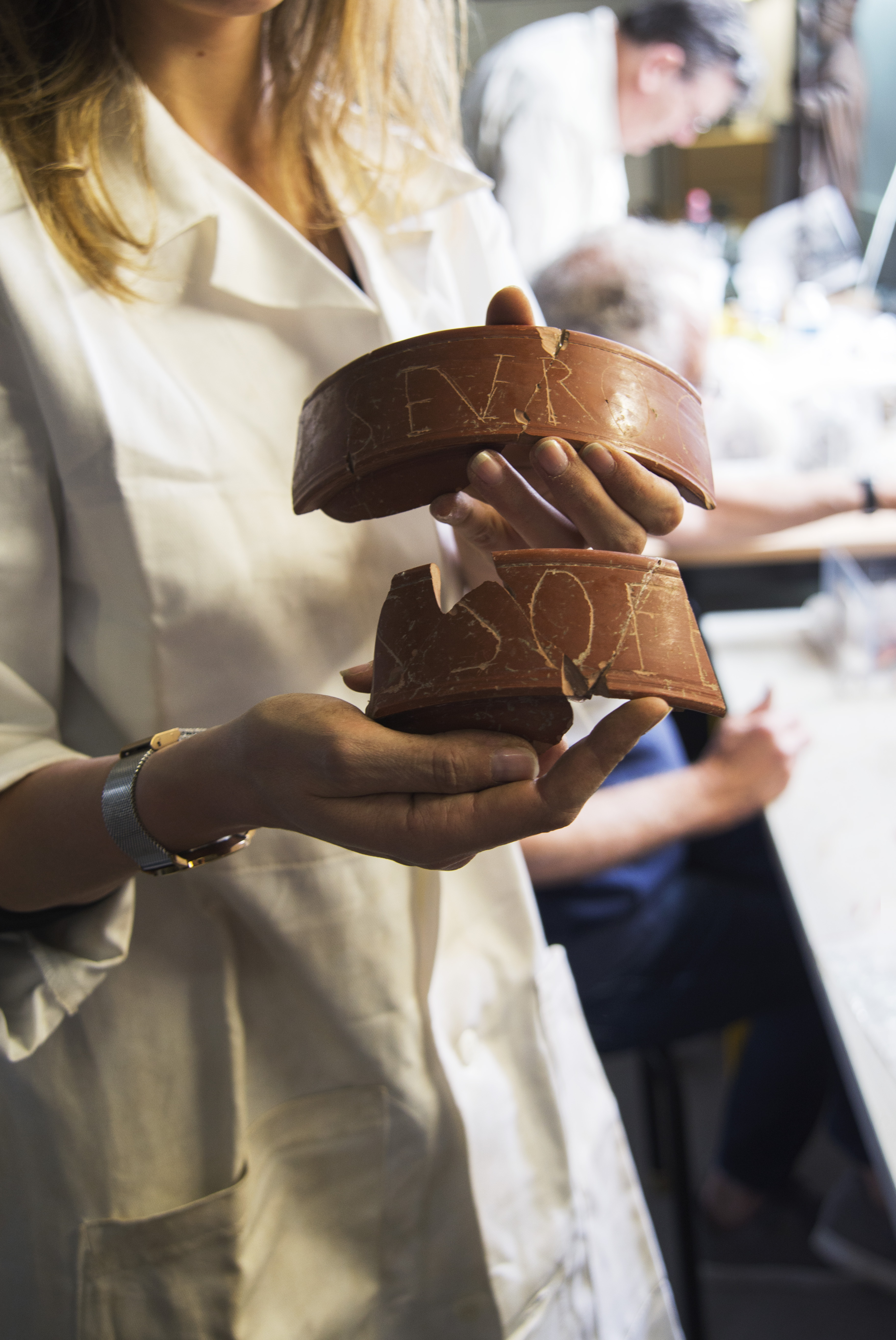By Morgane Andrieu

For a month now, I have been working with the LatinNow team and leading a new research project in Lyon, the capital of Gallia Lugdunensis. The systematic census of the inscriptions (graffiti) found on the ceramic tableware of the ancient city is an essential component to complete Lyon’s epigraphic collection of Latin and Gaulish inscriptions. Their interest primarily lies in the fact that they are the main and perhaps the only written testimonials of daily life, most of the other perishable supports having disappeared. This documentation, studied for the first time ever as a whole, is a precious source of knowledge for archaeology and epigraphy. While we mainly know well the writing of the elites in the official and funeral texts of the city, this corpus – destined to become one of the world’s largest Roman graffiti corpora – will allow us new perspectives, not only on the writing of everyday life (giving us Gaulish and Latin names, dedications, prices, provenance and content indications, etc.), but also on the penetration of Latin and its diffusion in the different contexts (domestic, religious, commercial, etc.).
A Roman colony founded in 43 BC, Lugdunum (Lyon) became the capital of the province of Gallia Lugdunensis, the seat of imperial power for the three Gallic provinces (Belgica, Aquitania, Lugdunensis) and Caput Galliarum, or “Capital of Gaul”. Located at a strategic junction, at the confluence of the river Saône and the Rhône, this Gallo-Roman city quickly became an important port and the centre of the Gallic road network. In contact with the whole Empire, Lyon was a commercial hub, welcoming visiting emperors and hosting a long-lasting centre for the production of imperial coinage from the late first century BC. Being a bustling place of passage and mixing, it is expected that the city will deliver many epigraphic testimonials, far more numerous than those currently recorded.
The project first consists of identifying all the graffiti from the collections, followed by their identification, their analysis and the creation of an illustrated catalogue (drawing and photography) as well as an open access database.

This material, largely ignored until now, allows us to ask new questions. How does Latin express itself in the different contexts of the city? What role did it play in this effervescent environment? The recording of the graffiti will help us to understand the effects of Latinization and exposure to Roman culture on the population of the capital, the core of which was originally Gaulish-speaking. But this case study does not only benefit our knowledge of ancient Lyon. Its importance applies to different levels of analysis employed in the LatinNow project, and beyond, including comparison with other settlements, detailed sociolinguistic analysis and the exploration of the nature of literacies across the north-western provinces. It may also serve as an example for conducting the same investigations elsewhere and will allow us to broaden our knowledge of languages and writing in the Empire.
As an associate researcher to the ArAr laboratory, Archéologie et Archéomètrie, based in Lyon (UMR 5138), I am benefiting from the experience of several senior archaeologists and researchers such as Michel Feugère, Armand Desbat and Cécile Batigne (Director of the laboratory) as well as working with other scientific members from the Lugdunum museum, the archaeological service of Lyon (SAVL), INRAP, Eveha and Archeodunum which have all been responsible for archaeological operations in the city.
It is an honour to be part of LatinNow which provides the opportunity for interdisciplinary exchanges of knowledge and results at an international level. It is also a great opportunity for the old civitas capital to contribute to our better understanding of the Latinization of the north-western Roman provinces. This new research project has the potential to launch a scientific dynamic in favour of the systematic study of all forms of writing whatever the size or value of their material support. The graffiti not only reflect life in Lugdunum and beyond, but carry the voices of the inhabitants of one of the largest and most important cities of the Empire, the capital of Gaul.